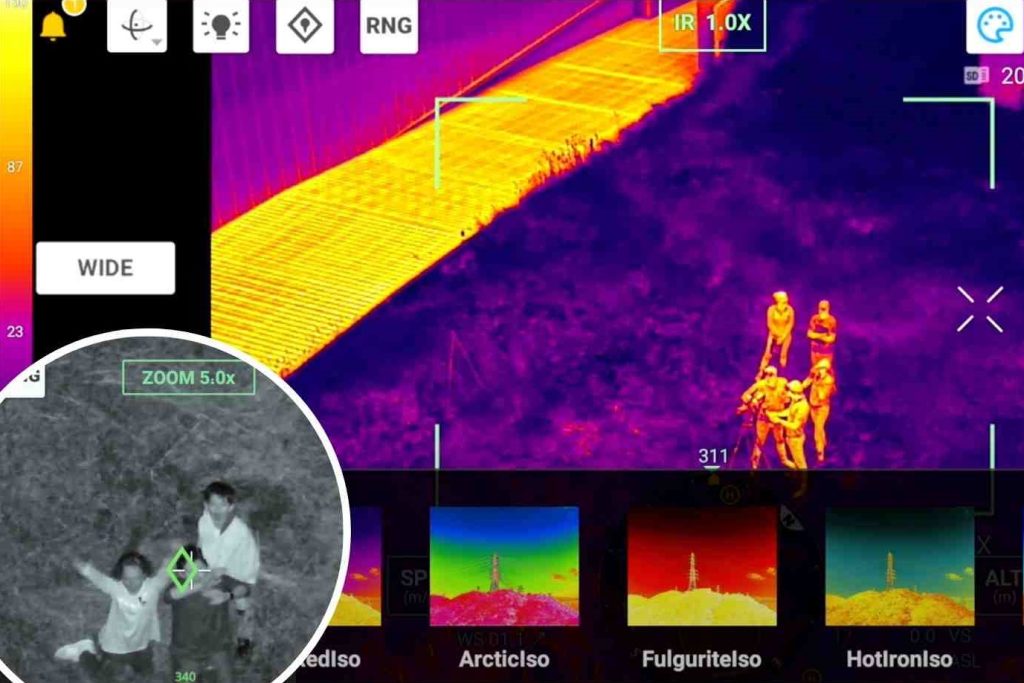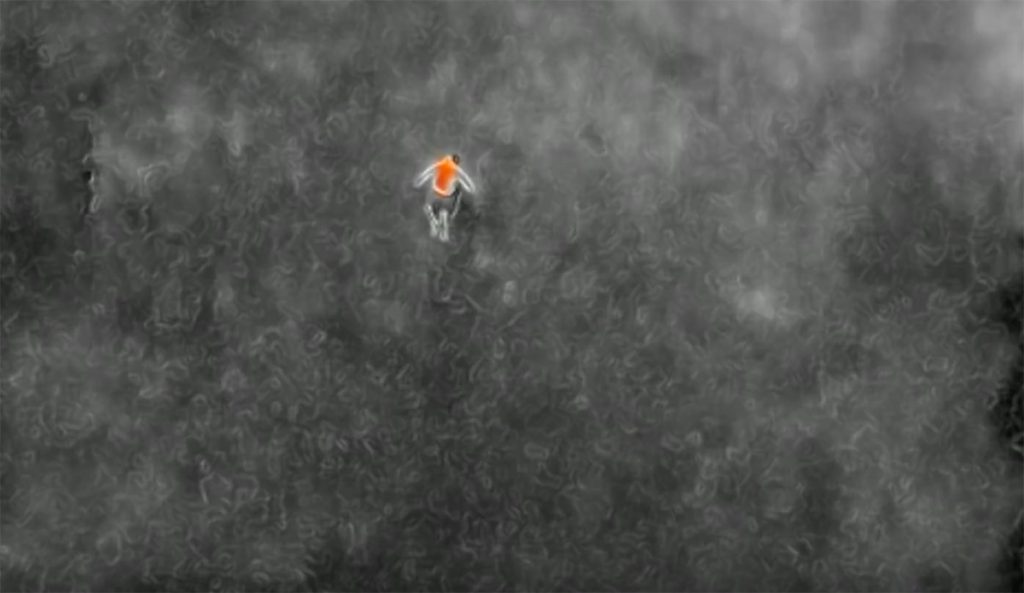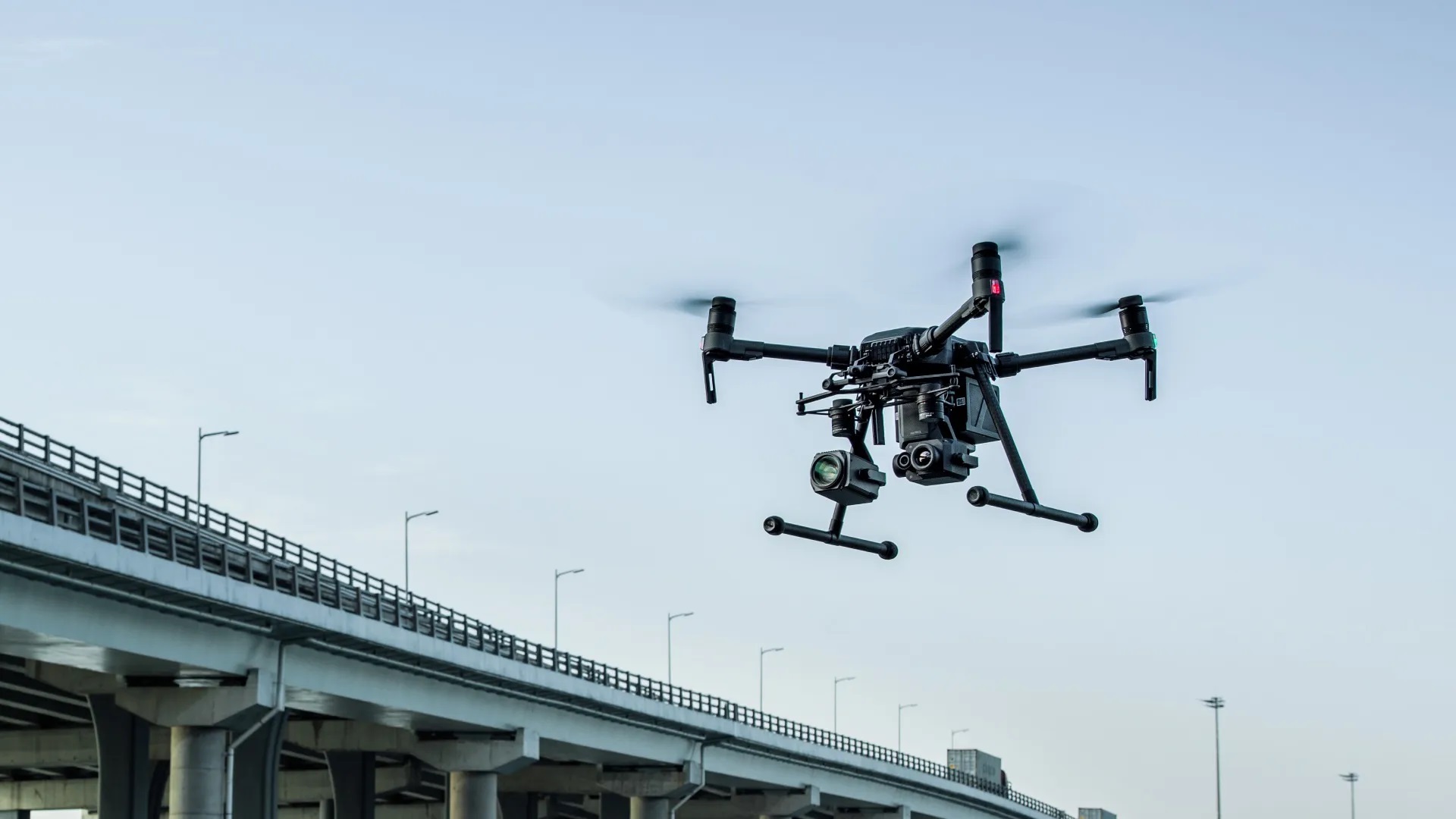At Droneview.be, we provide support to emergency services during search and rescue operations. With our advanced drones and cameras such as the Zenmuse XT2 and Zenmuse Z30, we can be a crucial aerial tool in locating missing persons from the air. Please note that we are not investigators or inspectors; rather, we offer our services as technical support for ground emergency services.
How Can Drones Assist in Search and Rescue Operations?
In search and rescue missions, speed and accuracy are essential. Our drones can quickly scan large areas, providing an overview of hard-to-reach terrains. We utilize two key technologies:
- Zenmuse XT2 (Thermal Camera): With this infrared camera, we can detect heat sources even in the most inhospitable areas or low visibility conditions, such as at night or in dense forests. This helps identify the location of missing persons by measuring heat emissions.
- Zenmuse Z30 (Optical Zoom): With the 30x optical zoom, we can focus on specific areas to view more details without needing to move the drone. This allows for remote visual inspections and searching areas that are difficult for emergency services to access.

When Are Drones Deployed in Search and Rescue Missions?
- Searching in Remote Areas: Such as in forests, mountains, or difficult terrains.
- Nighttime Rescues: Our thermal camera can detect heat sources when there is little light.
- Support for Large Search Teams: Our drones help quickly cover a large area, speeding up the search process.
-
Live Monitoring: In search and rescue operations, every second counts. That’s why we now have an external 32” monitor available, allowing emergency services and stakeholders to watch the flight live. This ensures fast and accurate information processing, enabling immediate response to the situation.
Thanks to this additional feature, we can collaborate more efficiently and coordinate search operations even better.
Limitations and Accountability
While our drones are powerful tools in search and rescue missions, we want to emphasize that we are not a research team. We do not provide analyses or conclusions; we only offer our drone equipment and imaging capabilities to emergency services and investigators on the ground. Our role is supportive, providing crucial aerial imagery to search the area more accurately and efficiently.

Benefits of Drones in Search and Rescue Operations:
Detailed Visual Support: With the Zenmuse Z30, we can zoom in on specific areas, aiding in the localization of missing persons without having to physically relocate the drone.
Rapid Search Actions Over Large Areas: Aerial imagery allows us to cover a large area in a short time, helping to quickly identify potential locations.
Thermal Detection in Any Conditions: Even in adverse weather or low-light situations, our thermal imaging can be life-saving.
Watch a demo video of the possibilities with the M210 Drone in combination with the Z30 and XT2 camera here
